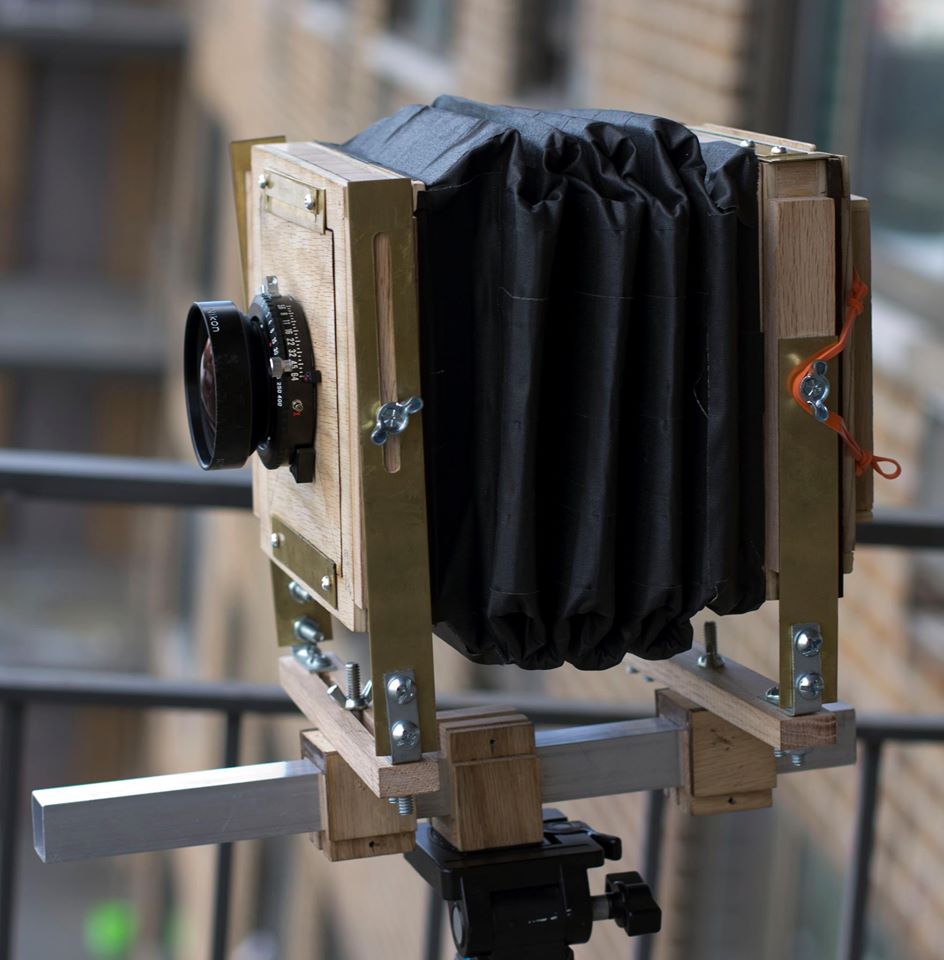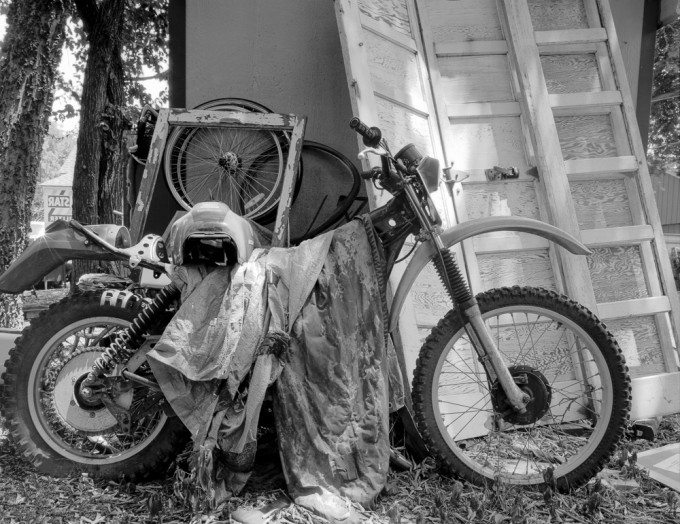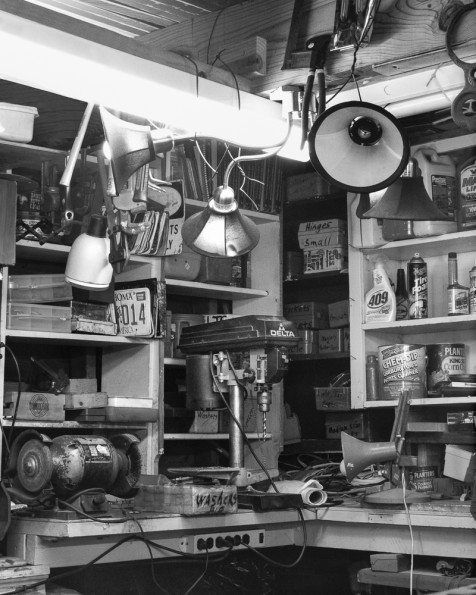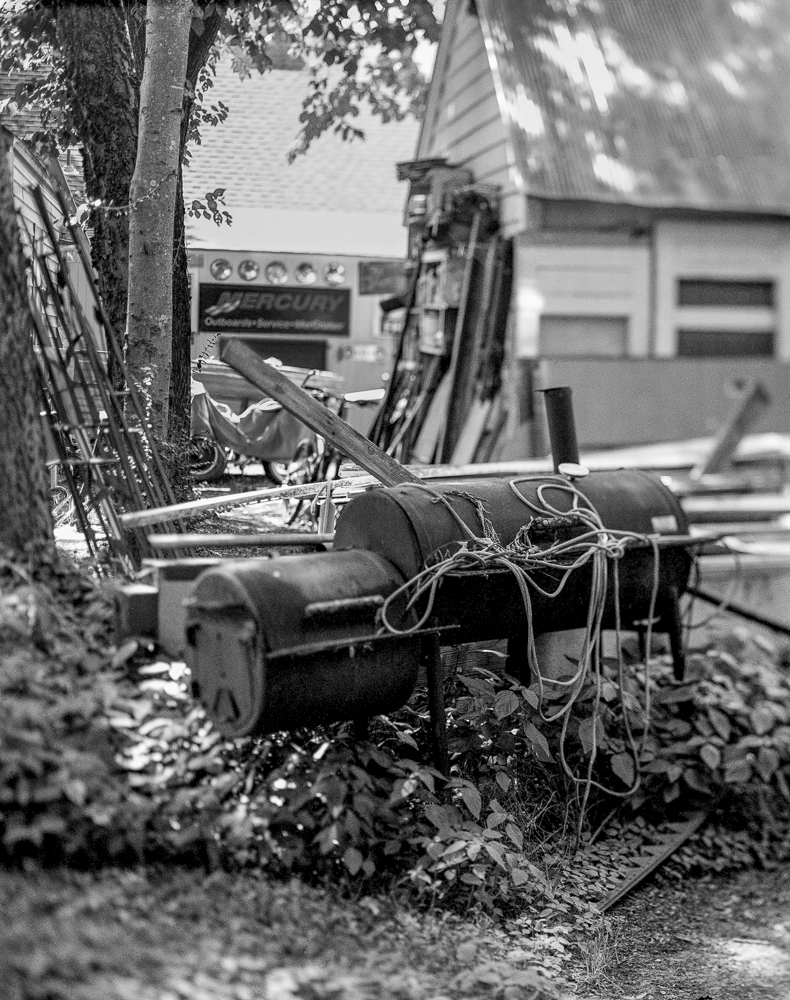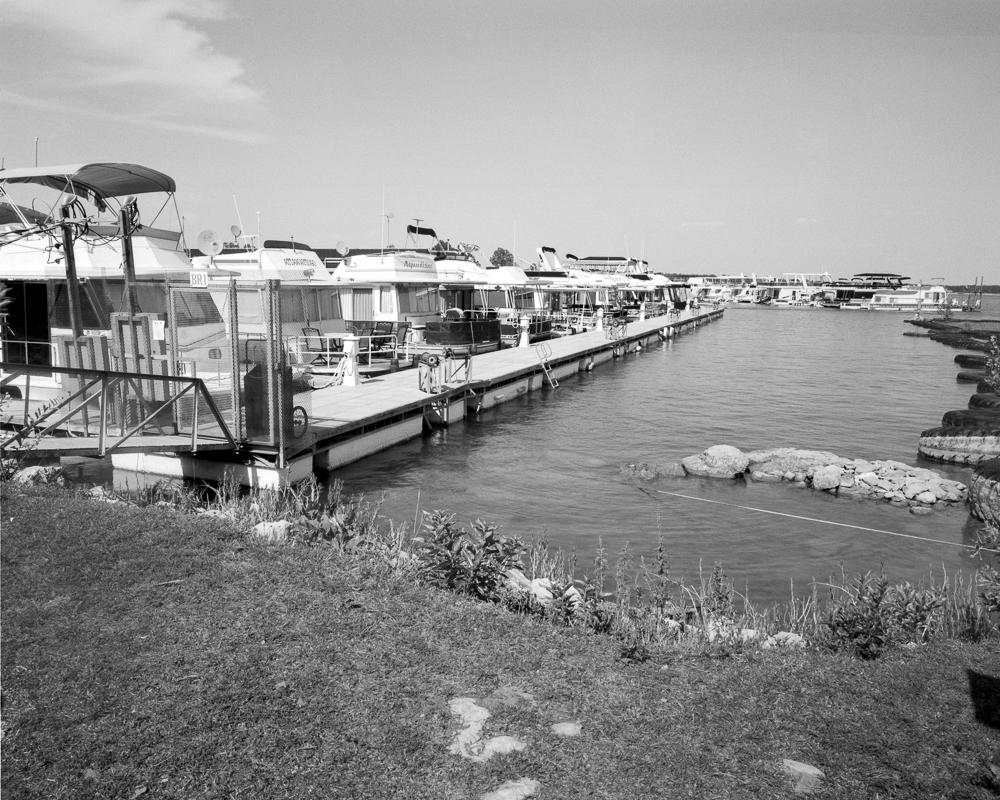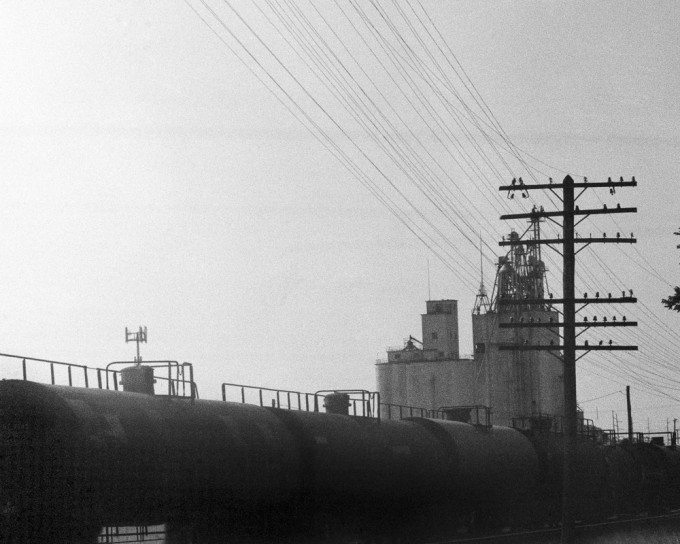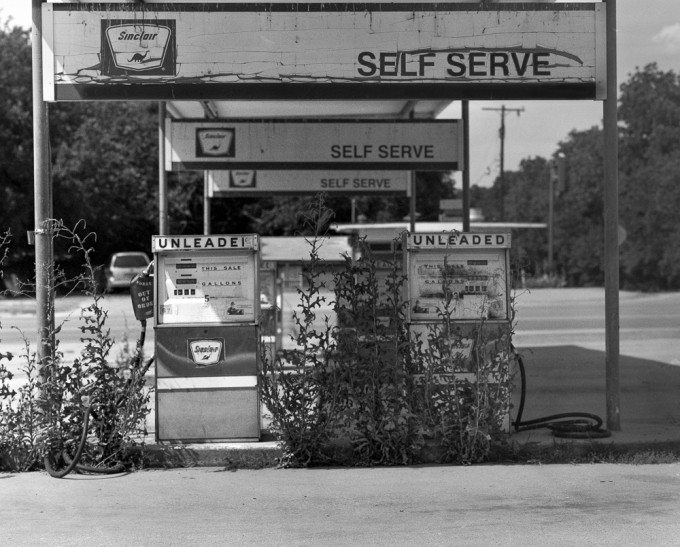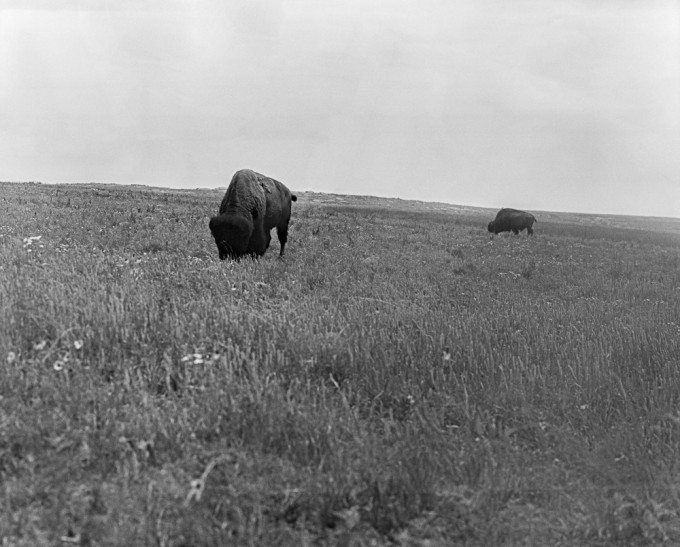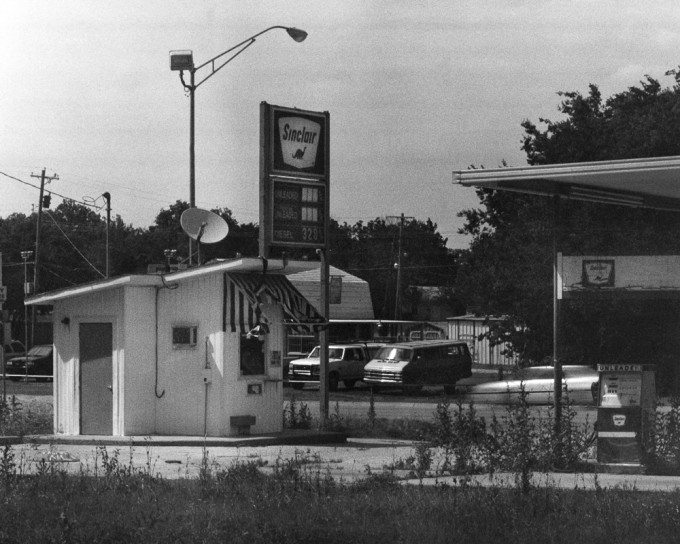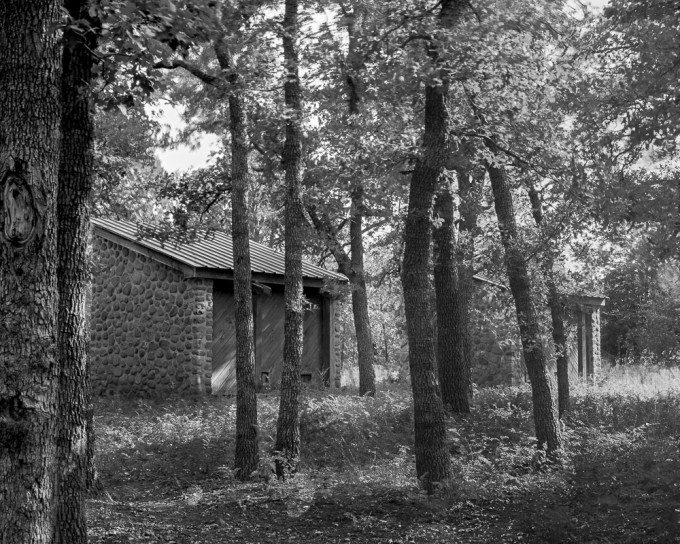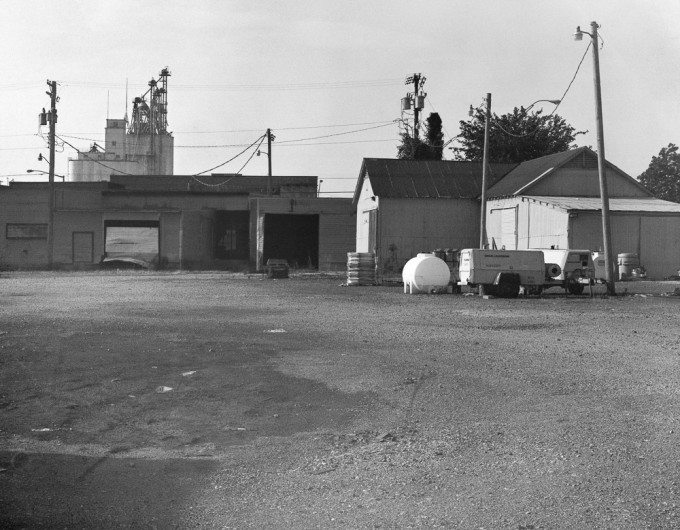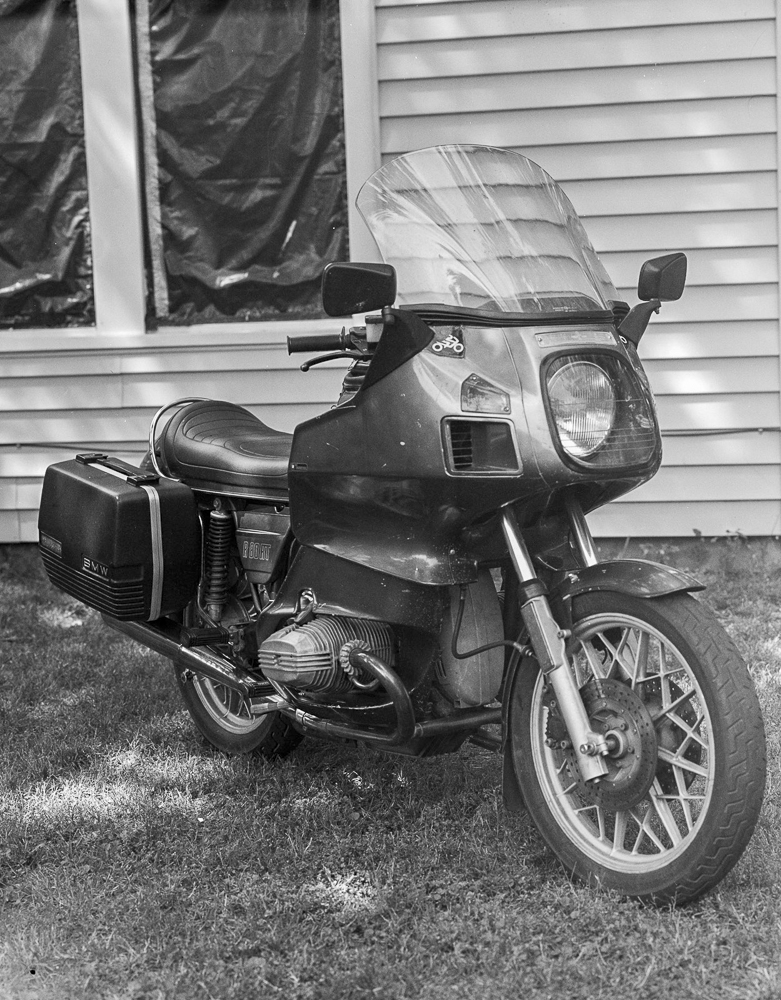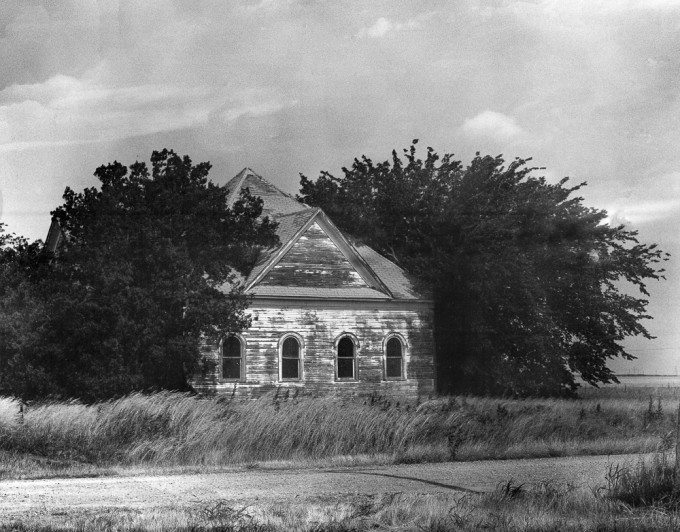Last Updated on 03/18/2015 by Chris Gampat
All images by Lucus Landers. Used with permission.
Photographer Lucus Landers has been featured here before after building his own 4×5 Polaroid camera, and he’s made something else. According to Lucus, it’s a “4×5 monorail made out of laser cut plywood. The craftsmanship isn’t nearly the same level as the camera you wrote about but it is incredibly easy to make.”
Many, many photographers tend to make their own cameras when they want to go for a larger format than 120 film. These often result in pinhole cameras that shoot beautiful images aided by the creativity of the photographer.
Lucus tells us that these are some of the first large format images he has have ever taken. “They were shot on Delta 100 and trey developed in my parent’s bathroom. The look of the film is due to the boiling heat the film was developed in and the fact that they were originally developed for the platinum/palladium printing process that requires a much more dense, higher contrast negative.”
He continued to state the look of them isn’t perfect nor are they the best that the camera can potentially make, but the images are personally very important to him.
“They were the first photos I took on the first camera I ever made. Since then I have learned how take much better large format images and refined the technical process. But none of them carry the same weight in my heart.”
We talked to Lucus more about the homemade 4×5 Monorail Camera.
Phoblographer: Where did you get the idea and inspiration to make this new camera?
Lucus: When I first got to Pratt, I was very intrigued by how cameras and film worked. And because of my background in fabrication and my love of invention it was only natural for me to start making cameras. This was the first camera I had ever built. I started designing it during my first semester sophomore year and took only a few months to complete. My reasoning was simple, I wanted to shoot large format, but I didn’t have a large format camera. I also wanted to completely understand how to use a large format camera. For me the best way to accomplish both goals was to build one myself. I personally think the best way to fully understand how something works it to build it yourself. While this camera isn’t the most beautifully made camera, it sparked a trend of handmade cameras that produced many interesting devices including the instant press camera you last wrote about.
Phoblographer: How exactly is this camera made?
Lucus: This camera is made extremely cheaply. The frames are made out of laser cut oak plywood and all of the hardware can be found at home depot. This design can also be easily reproduced. For the basic shape of the camera I relied on the designs of Jon Grepstad that he had posted online. I also read the Ansel Adams book “The Camera” to better understand the physical operations and movements of the camera. I took Grepstad’s plans and adapted them so that it could be easily made out of flat, single thickness plywood. The wooden parts of the camera were designed in a CAD program and then cut out of a single sheet of plywood with extreme precision. The wooden components are then simply glued together to make the two frames and rail guides. On this version there are some parts made of hardwood put in a pinch they could just as easily be made of laser cut plywood. The bellows are also handmade using cardboard and gaffers tape, but the frames use a standard size mount so that store bought bellows can fit. The brass fittings were cut using a jewelers saw out of a single piece of sheet brass. The entire camera, minus the lens and ground glass, can be made for less than $100 in parts and some simple tools.
Phoblographer: Does it function any different from other 4×5 bellows cameras in any way?
Lucus: For the most part no, it doesn’t function any different than a standard camera. It has a full range of movements and focuses just like a normal camera. But some of its movements are a bit restricted because of the homemade bellows. The back of the camera has a ground glass frame that accepts standard 4X5 negative holders. The camera is focused by simply moving the frames back and forth, just like on a standard monorail.
One the advantages over a traditional monorail is that it is incredibly light. It weighs less than most SLR cameras in fact. It can also be easily disassembled for transportation.
Phoblographer: What kind of lens are you using?
Lucus: The lens I used to take these photos is the nikkor 210mm f5.6. But it can use any 4×5 lens.


